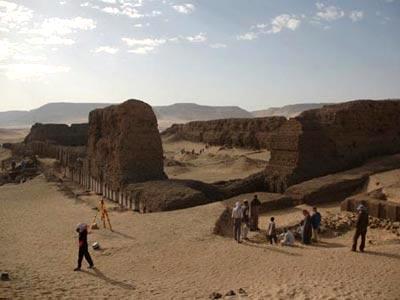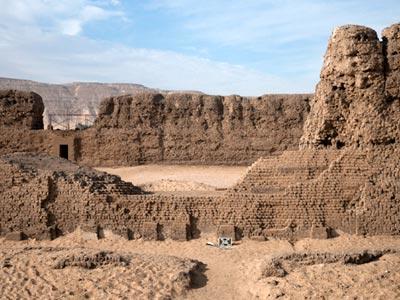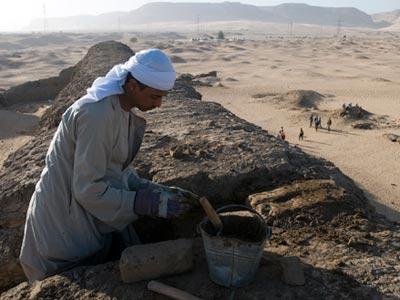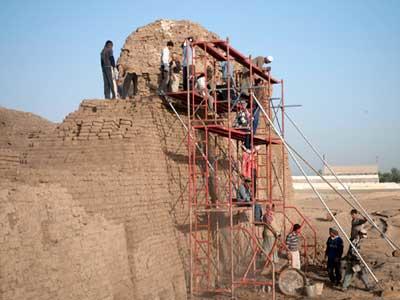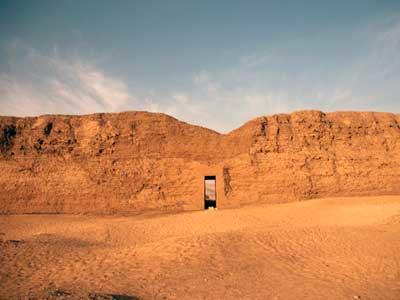Shunet El-Zebib
Shunet el-Zebib was built circa 2750 B.C. and served as a funerary cult enclosure of the Khasekhemwy, a second dynasty king. The structure is one of Egypt’s oldest standing royal monuments and one of the oldest preserved mud brick buildings in the world. The two-part funerary complex, consisting of the underground tomb and the above-ground enclosure, is of great architectural importance, as it portrays the earliest stages of the evolution of the pyramid. The structure includes two concentric rectangular enclosure walls. Most of the inner wall is intact while only part of the outer wall remains.. The enclosure walls stand 11-12 meters high in some places but suffers from structural instabilities as a result of a rising water table due to agricultural development, animal intervention, and wind and rain erosion.
2008 World Monuments Watch
With support provided by the Egyptian Supreme Council of Antiquities, WMF and the Institute of Fine Arts of New York University worked on the conservation of Shunet el-Zebib. From September 2008 to August 2009, the focus of the project was the conservation and comprehensive stabilization of the mud brick enclosure at Khasekhemwy. To begin the project it was necessary for 80 local workers to fabricate 150,000 mud bricks of the same dimension and a similar composition to the originals.The team then focused on the stabilization of the monument by using these bricks in the three most vulnerable and unstable areas: the West Gate, the east inner wall, and the west perimeter. In addition, bricks were added to areas where serious structural weaknesses were likely to develop in the future. filled in smaller holes in the structure made by hornets and foxes. The site is now maintained by Egypt’s Supreme Council of Antiquities.
Shunet el-Zebib is the only surviving standing structure of a series of funerary complexes built in the area between 3000 and 2750 B.C. by the kings of the first and second dynasties, and is therefore the only example of this earliest tradition of royal monumental funerary construction that still exists. The structure is also important in the evolution of the pyramid. Djoser, Khasekhemwy’s successor, built the Saqqara Step Pyramid, the earliest pyramid, the design of which is influenced by tomb and enclosure structures such as Shunet el-Zebib.

